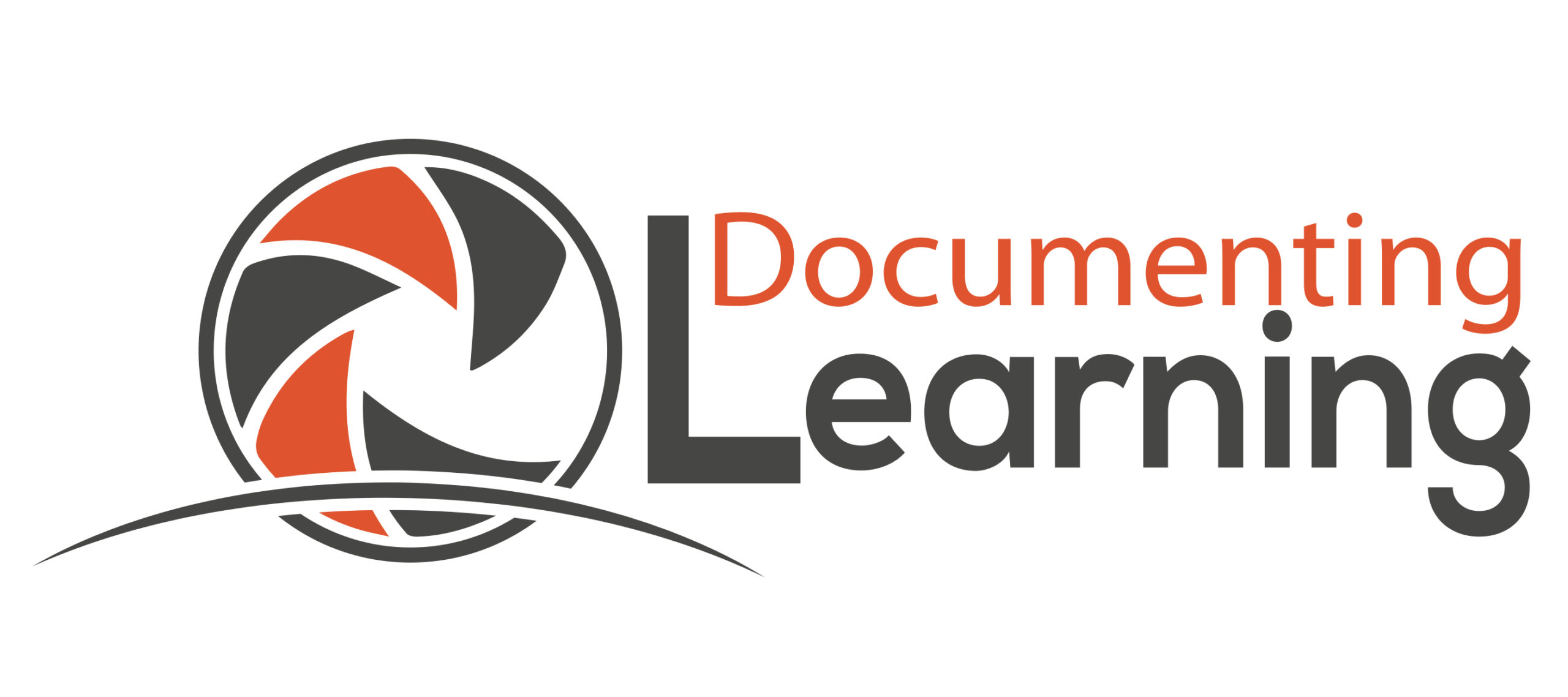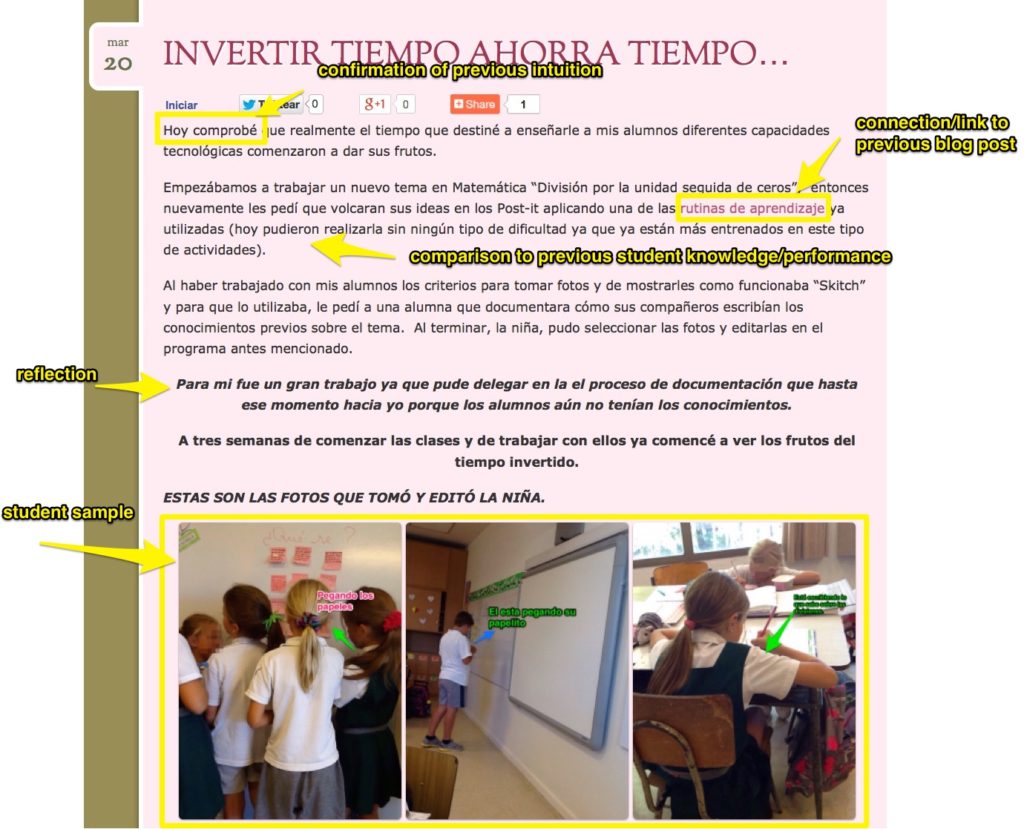We are in the middle of a enormous change of the culture of teaching and learning. The teacher must see himself/herself as a learner, since he/she is on uncharted territory as well in our ever changing (digital) world. Key competencies and literacies, such as global, media, network, information literacy and digital citizenship amplify our traditional notion and expectation of basic literacy in education. In addition to the traditional content knowledge we are expected to teach/learn in schools, we must include learning how to learn.
How do we achieve this in a culture of “drive by”workshops, once a year conferences, fly in/fly out consultants?
The new literacies and new media require of each one of us the capacity to stay constantly up to date. Teachers must learn for themselves what this means for their own professional growth in order to transfer these experiences and emerging pedagogies into their classrooms.
I am working with a cohort of teachers from the Goethe Schule in Buenos Aires, Argentina in a Blended Coaching Model.
Our work consists of onsite consulting, job embedded instructional coaching and workshops, blended with online coaching, workshops and feedback in the areas of modern learning skills and literacies. I spent five days in an intensive bootcamp with the participants in Buenos Aires, laying the foundation of the paradigm shift in education, establishing a common vocabulary and background information as well as equip participants with the technology know-how-skills to continue our coaching and learning relationship virtually for the rest of the school year (March-December 2015).
The goals of our work together included:
- self-awareness and experience in online social media and as a collaborative learner
- pedagogical documenting as learning on a variety of levels and for reflection through a variety of techniques including visible thinking.
- support in self-directed and self-motivated learning as a member of the cohort
- cohort participants as models for the rest of the faculty. Through public sharing of their experiences, participants become passive teachers which, with time, could transform into an active peer-coaching
- the school develops a public digital portfolio of their professional development initiatives, as well a show-and-tell of best practices and pedagogies. The portfolio serves as a parent-school communication as well as a resource for other schools.
Pedagogy is defined as the methods, techniques and strategies of teachers to facilitate learning. As teachers we are charged to prepare our students for THEIR future as active members of society and for the challenges the 21st century and beyond bring with them.
The central hub of our work together can be found on the Goethe Cohort Blog.
 Cohort participants document their general learning as well a more specific area of interest to them on their GloballyConnectedLearning blog.
Cohort participants document their general learning as well a more specific area of interest to them on their GloballyConnectedLearning blog.
Cameron Paterson on his blog It is About Learning writes in a post titled: How do we learn in teams? about the benefits of documentation and sharing:
deeper thinking, starting conversations, sharing between departments and building on each other’s efforts, sharing/reflecting on the process/progression/learning and where that might lead to next, valuing more than the finished product, encouraging team collaboration to inform and improve. ‘Share-worthy’ material does not have to be perfect and packaged, it can be a work-in-progress rather than ready to use. Reflection and improvement, and growth mindset are needed to keep it moving forward, to not just avoid failure, but avoid plateauing or sticking to the status quo. It should be seen as a comment/feedback space, not show and tell. We need to learn from mistakes and share what didn’t work so others can learn from it, and celebrate our mistakes.
As the first month (March) of school in the Southern Hemisphere came to an end, I am in turn documenting the incredible variety of documentation style, reflection and learning growth that is occurring via the blogs of the cohort participants.
- jumping over their own shadows and sharing their learning with their world (transparently)
- taking first steps in using technology in their classrooms (and sharing these steps…)
- making their own and students’ learning and thinking visible for their own reflection and assessment (and sharing them publicly for others to learn from their experiences….)
- using a variety of documentation techniques (and making these techniques visible for others to emulate…)
Did I mention that SHARING is a huge component of the work?
Let me unpack a variety of their recent blog posts for you…. [ in return take a moment, click yourself through to the blog posts (use Google Translate if necessary, read the blog posts and leave their authors a comment in your native language. Let’s model that language abilities are no longer barriers…]
Andrea B reflects on her time invested in teaching her students certain technology skills and routines, saves her time in the end:
- confirmation of previous intuition regarding time invested in teaching tech skills to students
- using links to refer back to a previous blog post
- comparing her students’ skills to previous performance/knowledge
- embedded reflection piece into blog
- showcasing student work as evidence of learning
- documenting from the beginning her comfort and knowledge level
- embedding reflection by sharing her perspective and most important aspects of her learning
- showing evidence of writing for an audience, by acknowledging her reasons for sharing
- use of different media (text & image) to document her learning journey.
- using a variety of media to document the lesson (text, images, video)
- narrating the lesson step by step
- using supportive images to make the lesson more visual for the reader
- including student work samples
- annotating images for clarifications
- linking to a video taken during the lesson to give readers/viewers a glimpse into the classroom
- clearly writing for an audience by
- sharing tools used
- comparing different stages of the research, initial visualization of brainstorm, connections and relationships to be researched
- reflecting on the process, her students’ learning process as well as her process of re-directing her own teaching strategy
- using the documentation of student work as part of the process (analysis and evaluation)
- demonstrating transfer of her own experience with making learning and thinking visible to her classroom
- a title that hooks potential readers
- observations from the classroom
- evidence of further research she has done and is connecting to her own investigation
- an illustration, serving as a visual, to loosen up the text blocks
- a demonstration of her digital design skills of creating an artifact of her class’ reflection regarding using videos for learning
- evidence of her modeling how to make thinking visible for her students
- variety of media: text, images, video
- annotated images for clarification
- connections made to previous learning
- chronological documentation of several learning activities in different learning spaces
- samples of student work
- documentation from the beginning of the school year to be able to compare understanding at later points in time
- images that support the investigation of the essential question, showcasing the learning environment
- evidence of metacognition as part of the process
- embedded videos as another summary of student understanding at this moment in time
- a commitment of continuing to document throughout the school year students’ understanding and knowledge about Social Studies
- a documentation of strategic reflection opportunities made available to student and displayed in the classroom









